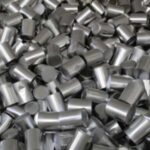Now Reading: The Future of Winding Techniques: Advancing Manufacturing Efficiency
-
01
The Future of Winding Techniques: Advancing Manufacturing Efficiency
The Future of Winding Techniques: Advancing Manufacturing Efficiency

Winding techniques play a pivotal role in various manufacturing processes, impacting everything from the textiles we wear to the electronics that power our lives. As industries evolve, so do the methods and technologies used to create coils and other essential components. Understanding these advancements can give manufacturers a competitive edge while enhancing product quality.
Coil winding machine manufacturers are at the forefront of this transformation, introducing innovative solutions that streamline operations and improve efficiency. In this blog post, we’ll delve into traditional vs advanced winding methods, explore industry-specific applications, and discuss how technology has evolved over time. Join us as we unravel the complexities of winding techniques and discover what lies ahead for this crucial aspect of manufacturing.
Traditional Winding Methods vs Advanced Winding Techniques
Traditional winding methods often rely on manual labor and basic machines. Operators meticulously wrap materials around a core, ensuring uniform tension and alignment. This process can be time-consuming and prone to human error.
In contrast, advanced winding techniques leverage automation and precision engineering. Modern coil winding machines use computer-controlled systems that optimize speed and accuracy. These machines minimize the risk of defects while maximizing production output.
Advanced techniques also allow for more complex geometries and tighter tolerances that traditional methods struggle to achieve. With capabilities like multi-layer winding or integrated inspection systems, manufacturers can meet stringent quality standards effortlessly.
The shift from manual to automated processes marks a significant evolution in the industry. Manufacturers are now equipped with tools that enhance not just efficiency but also product consistency over large runs.
Industry-Specific Machine Applications Textile, Packaging, and Electronics
In the textile industry, coil winding machines play a crucial role in shaping fibers into usable products. These machines allow for precise tension control and uniform winding, ensuring consistent quality in yarn production.
Packaging applications also benefit from advanced winding techniques. Machines designed for this sector efficiently handle various materials like films and foils. They ensure optimal roll sizes that meet retail standards while minimizing waste.


















